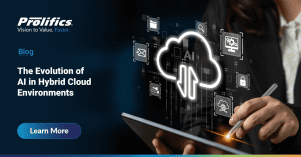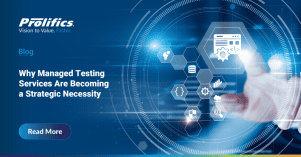4 min. read
In the fast-paced and ever-changing world of technology, artificial intelligence (AI) has emerged as a game-changer for businesses worldwide. Its impact on workflow and labor management has been nothing short of transformative. With the rise of AI-assisted workflows and digital labor, traditional work paradigms are being revolutionized, driving organizations toward enhanced productivity, efficiency, and competitiveness.
The Future-Proofing Potential of AI and Digital Labor
By 2030, the projected shortage of skilled labor is a staggering 85.2 million workers. – Salem Hadim, VP of Automation and Cloud Solutions at Prolifics
As the demand for skilled workers grows, integrating AI technology with automation solutions becomes paramount. AI algorithms analyze data and make intelligent decisions, while digital labor handles manual tasks with precision and accuracy. This empowers employees to focus on creativity and complex problem-solving, ensuring maximum productivity despite the challenges of a reduced workforce.
The ability to automate tasks and optimize processes through AI integration allows companies to thrive in the face of labor market challenges. Embracing AI-driven work processes paves the way for limitless possibilities. The future of work is bright, and the potential of AI and automation is limitless.
AI-Assisted Workflow: Streamlining Operations with Intelligence
AI-assisted workflow refers to the integration of artificial intelligence into various business processes to optimize and automate tasks. By leveraging machine learning algorithms, natural language processing, and other AI capabilities, organizations can streamline complex workflows, increase accuracy, and reduce manual intervention. The ultimate goal is to empower employees to focus on more strategic, creative, and value-added tasks while AI takes care of repetitive, time-consuming operations. The benefits include:
- Automating Mundane Tasks: Mundane and repetitive tasks that used to consume valuable time can now be automated, freeing up human resources for more meaningful work.
- Enhancing Decision-Making: AI’s ability to analyze vast amounts of data and draw intelligent insights enables faster and more informed decision-making.
- Improving Customer Experience: AI-powered tools can personalize customer interactions, leading to improved customer satisfaction and loyalty.
Digital Labor: The AI Workforce of the Future
Digital labor refers to the deployment of virtual or digital workers that mimic human actions and behaviors to perform tasks across various applications and systems. These digital workers, commonly known as “software robots” or “bots,” play a crucial role in the AI-assisted workflow paradigm. The benefits of digital labor are noteworthy:
- Scalability and Efficiency: Digital workers can handle tasks at a scale and speed that human workers simply cannot match, leading to increased overall efficiency.
- Consistency and Compliance: Bots follow predefined rules and regulations consistently, ensuring compliance and minimizing errors.
- Cost Savings: Adopting digital labor can significantly reduce operational costs by optimizing resource allocation and maximizing productivity.
Are you curious about how AI can optimize workflows, boost productivity, and elevate customer experience? Contact Us.




